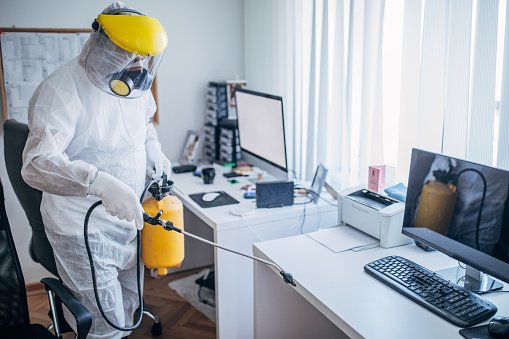Ants can be a significant nuisance for homeowners, particularly in areas like Flushing and Jamaica where the climate can make these pests more persistent. Effective ant removal requires understanding their behavior, identifying entry points, and employing both preventive and corrective measures. In this comprehensive guide, we will explore effective strategies for ant removal, focusing on Flushing and Jamaica, and provide actionable tips to help homeowners manage and eliminate ant infestations.
Understanding Ant Behavior
Before diving into removal strategies, it’s crucial to understand why ants invade homes. Ants are social insects that live in colonies and are highly organized. They enter homes in search of food, water, and shelter. Common species in Flushing and Jamaica include:
- Odorous House Ants: Known for their distinctive smell when crushed, these ants are attracted to sugary substances and are often found in kitchens and pantries.
- Pavement Ants: These ants build nests under pavements and sidewalks and are commonly seen around food sources in homes.
- Carpenter Ants: These ants can cause structural damage by hollowing out wood to build their nests. They are attracted to moist or decaying wood.
- Sugar Ants: These are attracted to sweet foods and can be found foraging in kitchen areas and food storage spaces.
Understanding the specific type of ant you’re dealing with will help in selecting the most effective treatment method.
Identifying Entry Points
Ants can enter homes through the tiniest of cracks and crevices. Common entry points include:
- Door and Window Frames: Gaps and cracks around doors and windows provide easy access.
- Foundations and Walls: Ants can enter through cracks in foundations or walls.
- Plumbing: Pipes and plumbing fixtures can be a gateway for ants.
- Vents and Electrical Outlets: Openings around vents and electrical outlets can serve as entry points.
Inspecting your home thoroughly for these entry points is the first step in an effective ant removal strategy.
Preventive Measures
Prevention is key to avoiding ant infestations. Implement the following preventive measures to keep ants at bay:
- Maintain Cleanliness: Regularly clean your home, especially the kitchen and dining areas. Ants are attracted to food crumbs, spills, and residues.
- Seal Entry Points: Use caulk or weather stripping to seal gaps around doors, windows, and other entry points. Repair any cracks in walls or foundations.
- Proper Food Storage: Store food in airtight containers. Ensure that all food waste is disposed of properly and that garbage cans are tightly sealed.
- Eliminate Standing Water: Fix leaks and ensure that there is no standing water around your home. Ants need water to survive, so eliminating sources of moisture can deter them.
- Regular Inspection: Periodically inspect your home for signs of ants or other pests and address any issues promptly.
DIY Ant Removal Techniques
For minor ant problems, several DIY methods can be effective:
- Ant Baits: Commercial ant baits attract ants, which then carry the poison back to their colony. This method targets the entire colony and can be highly effective.
- Homemade Bait: Mix boric acid with sugar or honey to create a homemade ant bait. The sugar attracts the ants, and the boric acid acts as a poison.
- Vinegar Solution: A mixture of equal parts vinegar and water can be used to wipe down surfaces where ants are seen. Vinegar disrupts their scent trails and repels them.
- Lemon Juice: Similar to vinegar, lemon juice can be used to disrupt ant trails and repel ants. Apply it around entry points and areas where ants are frequently seen.
- Diatomaceous Earth: This natural powder is effective in killing ants by dehydrating them. Sprinkle it around entry points and areas where ants are active.
Professional Ant Removal Services
For more severe infestations or when DIY methods fail, it may be necessary to seek professional help. Here’s what to expect from professional ant removal services:
- Inspection and Assessment: A professional will conduct a thorough inspection to identify the ant species, entry points, and the extent of the infestation.
- Customized Treatment Plan: Based on the inspection, a customized treatment plan will be developed. This may include baiting, spraying, and sealing entry points.
- Follow-Up Visits: Professionals often provide follow-up visits to ensure that the treatment has been effective and to address any new issues that may arise.
- Preventive Advice: In addition to removal, professionals will offer advice on how to prevent future infestations, including recommendations on home maintenance and cleanliness.
Ant Removal in Flushing
Flushing, located in Queens, New York, experiences a humid climate that can attract ants. Specific strategies for ant removal in Flushing include:
- Local Pest Control Services: Utilize pest control services that specialize in ant removal in the Flushing area. They will be familiar with local ant species and effective treatment methods.
- Community Resources: Engage with local community resources or neighborhood groups for recommendations on effective ant control methods and local service providers.
- Seasonal Considerations: Be aware of seasonal patterns. Ants are more active during warmer months, so proactive measures may be necessary before peak infestation times.
Ant Removal in Jamaica
Jamaica, also located in Queens, New York, faces similar challenges with ant infestations. Key considerations for Jamaica include:
- Climate Adaptation: The climate in Jamaica can contribute to higher ant activity. Ensure that your ant removal strategies are adapted to handle the increased activity during warmer months.
- Local Expertise: Seek out pest control professionals with experience in dealing with ant problems specific to Jamaica. They will have insights into local ant species and effective treatments.
- Integrated Pest Management: Consider an integrated pest management (IPM) approach, which combines multiple strategies, including prevention, monitoring, and targeted treatments.
Conclusion
Ant removal in Flushing and Jamaica requires a combination of preventive measures, DIY techniques, and professional services to effectively manage and eliminate ant infestations. Understanding ant behavior, identifying entry points, and implementing both preventive and corrective strategies are essential for maintaining a pest-free home. Whether you’re dealing with a minor issue or a significant infestation, employing these methods can help you achieve effective ant control and ensure a comfortable living environment.









